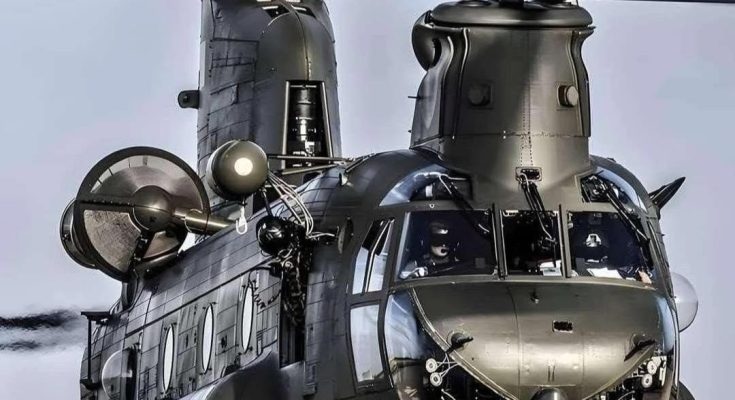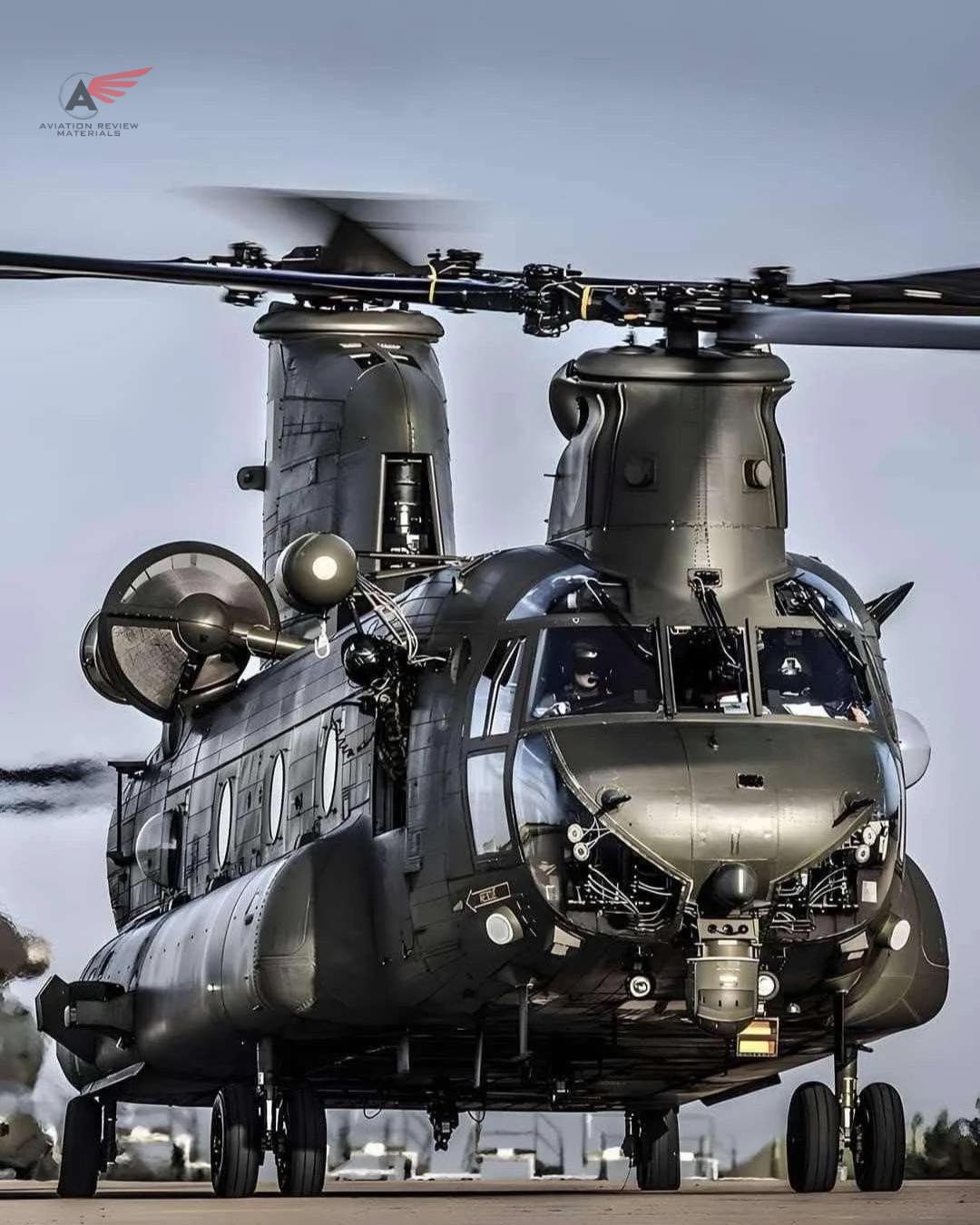
Below is a detailed military analysis based on the provided image. The aircraft shown is a tandem-rotor heavy-lift helicopter in a special-operations/low-visibility finish that closely matches the CH-47/MH-47 family. The analysis covers platform ID cues, capabilities, typical mission sets, sensors and self-protection, tactics for employment, vulnerabilities and mitigations, sustainment considerations, and operational implications.
Visual identification & key airframe features
-
Tandem rotors: Two large counter-rotating rotors fore and aft — a signature of the Chinook family — enabling high lift and stable heavy-load carriage without the need for a tail rotor.
-
Fuselage shape & sponsons: Slab-sided fuselage with large sponsons (fuel/landing gear housings) and multiple side windows/cargo doors; robust landing gear for semi-prepared surfaces.
-
Forward cockpit glazing and nose fitments: Multi-panel cockpit glazing and under-nose installations (sensors, refuelling receptacle/FLIR turret on some variants) consistent with upgraded/so-called special-operations Chinook variants (MH-47).
-
Black/low-vis paint and external equipment: Dark finish, external pods and antennas indicate special-operations or night-mission configuration with enhanced communications, sensors and likely aerial refuelling plumbing.
Core capabilities & mission sets
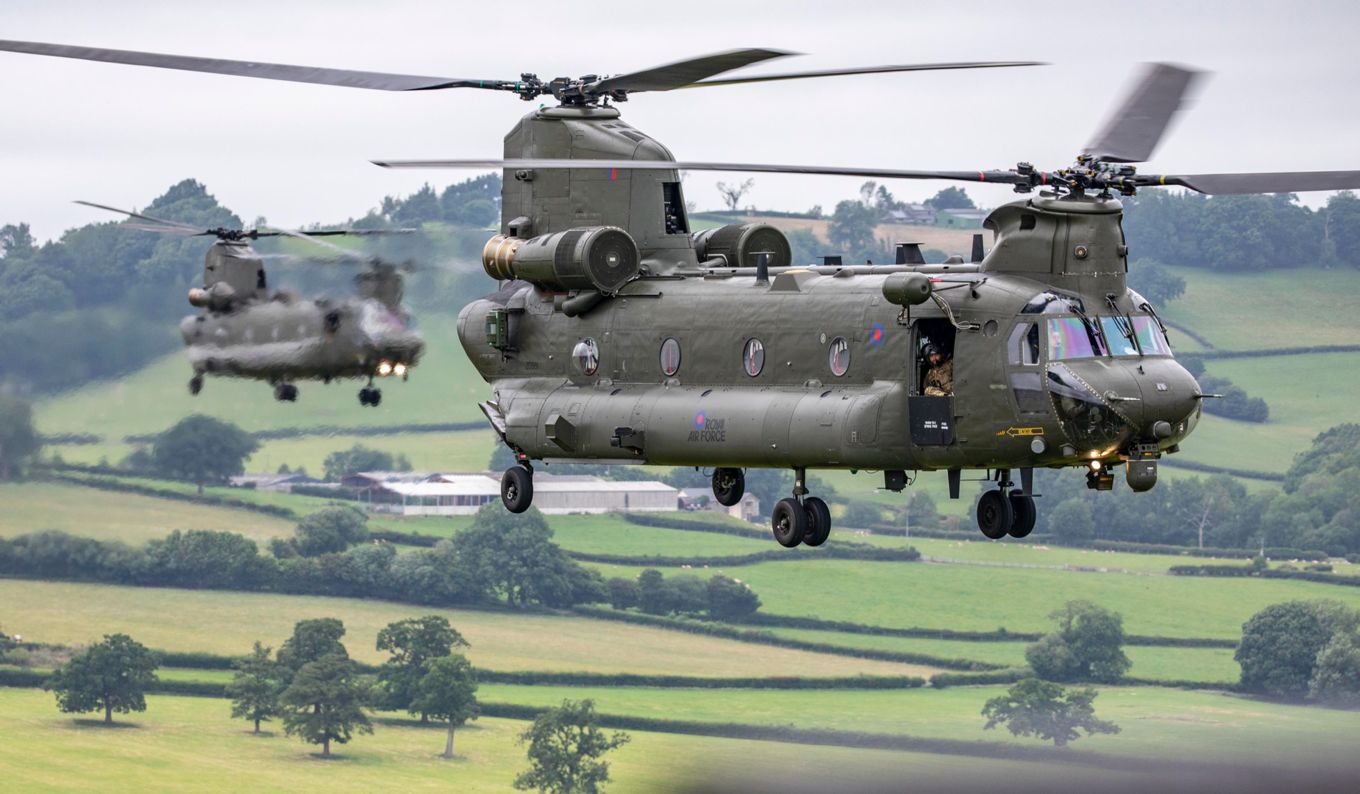
-
Heavy lift and rapid theatre mobility: Designed to lift large internal loads (vehicles, pallets, bulk cargo) and high numbers of personnel. Also optimized for external sling loads (generators, howitzers, ships’ stores).
-
Troop insertion/extraction: Carries assault forces, airborne units, or special operations detachments directly to forward LZs; rapid embark/disembark via rear ramp.
-
Special operations / long-range infiltration: MH variants include in-flight refuelling plumbing, extra fuel tanks and advanced navigation for long-range, clandestine insertions.
-
Humanitarian assistance & disaster relief: High cargo volume, ability to operate from austere strips, ideal for mass relief logistics and casualty evacuation.
-
Airborne resupply & sling operations: Precision external load delivery and rapid re-arm/re-supply of forward units.
-
Medical evacuation & command posts: Configurable internal layout for MEDEVAC or forward C2 platforms.
Sensors, avionics & communications
-
Navigation & situational awareness: Advanced INS/GPS, NVG-compatible cockpit, terrain-following/avoidance aids on SOF variants, digital avionics suites to operate in degraded environments.
-
Targeting/observation sensors: Some government/mission configs mount EO/IR turrets or multi-sensor pods for night operations and route recon.
-
Communications suite: Multi-band radios, datalinks and secure SATCOM on special-ops aircraft to permit inter-service interoperability and direct link to higher echelon C2.
-
Aerial refuelling capability: Certain MH-47s have probe or drogue fittings for extended range; visible plumbing/attachments in the image support this inference.
Survivability & self-protection systems
-
Passive protection: Armoured crew stations, self-sealing fuel tanks and redundant systems for critical flight controls.
-
Active protection: Radar warning receivers (RWR), missile approach/laser warning systems (MAWS/LWS), dispensers for chaff/flares and directional infrared countermeasures (DIRCM) on some missionized aircraft.
-
EMCON and low-observable tactics: Dark paint and emissions control practices reduce visual and electronic signatures during clandestine operations.
-
Escort doctrine: In high-threat environments, Chinooks are typically escorted by attack helicopters (e.g., Apaches) and supported by SEAD/EW assets to neutralize short-range air defenses.
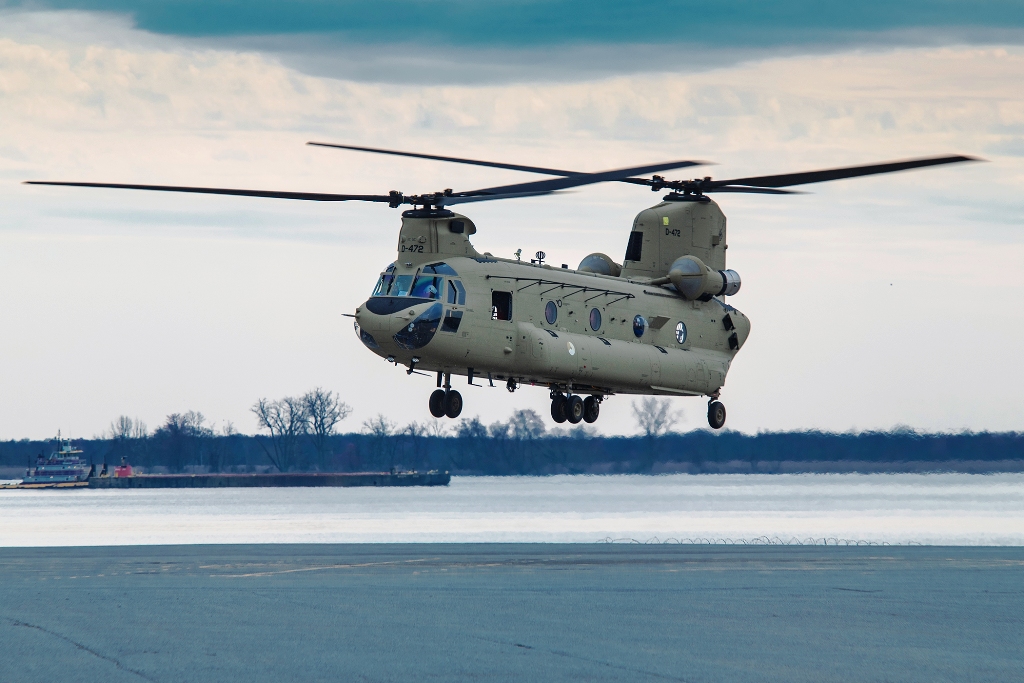
Tactical employment doctrine
-
Integrated planning: Heavy-lift missions demand detailed ISR pre-planning: route reconnaissance, AO suppression, and landing-zone security by ground or aerial forces before touchdown.
-
FARP dependency: Use of forward arming and refuelling points extends operational range but requires security and hardened procedures to survive counter-attack.
-
Sling-load & rapid throughput: For high tempo logistics, sorties are planned to maximize quick offload/sling load ops and minimize hover exposure time.
-
Night and NVG operations: SOF Chinooks exploit night to reduce exposure; NVG-aided formation flight and covert insertion are doctrinal staples.
-
Distributed landings & deception: Multiple staggered LZs and false approaches complicate enemy targeting and lessen the risk of catastrophic loss from a single strike.
Threats, vulnerabilities & mitigation
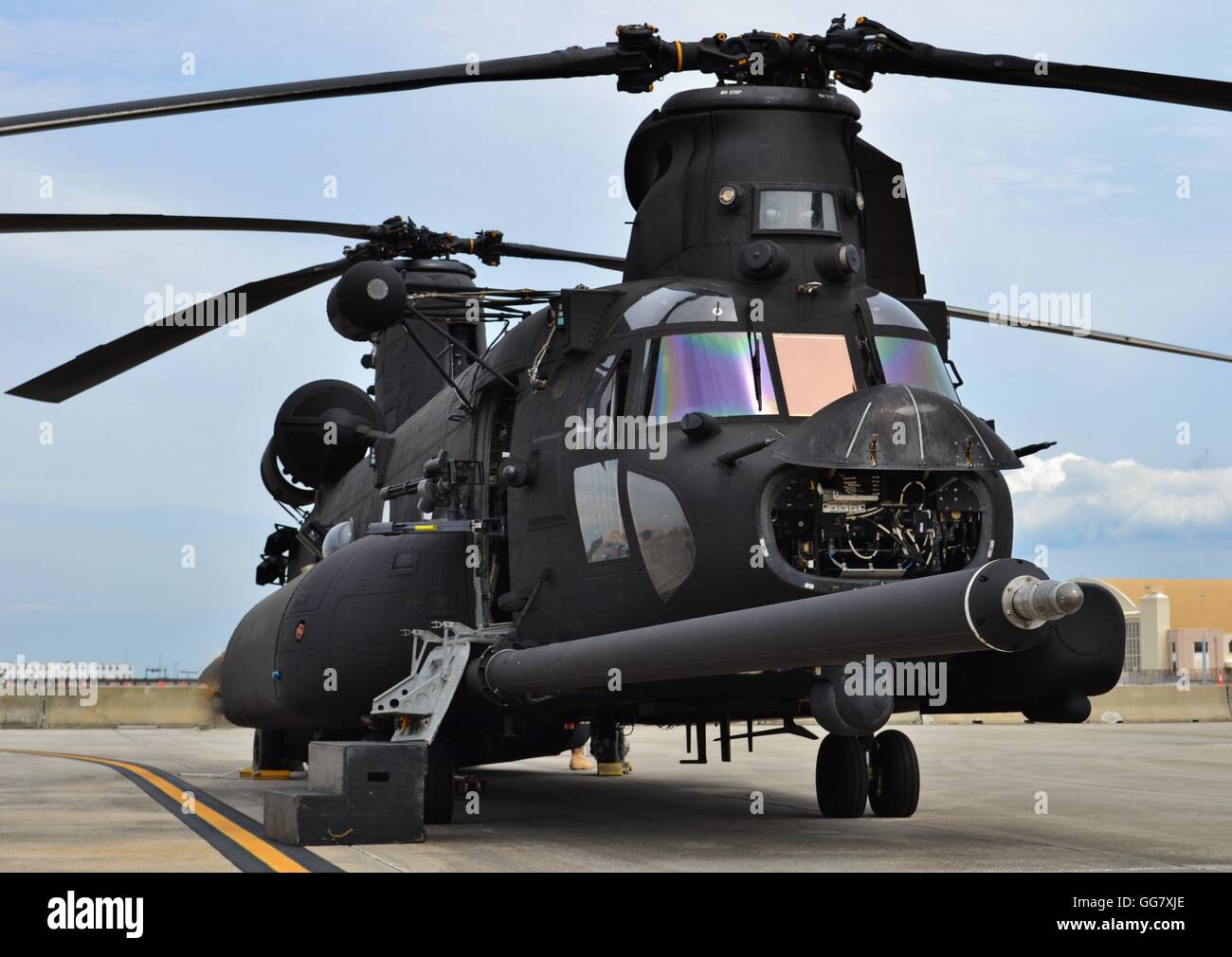
-
Primary threats: MANPADS, SHORAD autocannon (23–35 mm), heavy machine guns, loitering munitions/drones, and integrated air defenses (radar-guided SAMs).
-
Vulnerability profile: Large radar cross-section, significant infrared signature from twin engines and rotor downwash, and relatively slow transit speed make it a tempting target in low-altitude corridors.
-
Mitigations:
-
Strict EMCON and low-altitude routing using terrain masking where possible.
-
-
-
Coordinated SEAD and suppression (air or artillery) before operations.
-
Escort by armed helicopters and use of decoy UAVs / ISR screens.
-
Active countermeasures: DIRCM, MAWS, flares and chaff, and rapid landing procedures to reduce hover time.
-
Hardened FARPs and dispersion of landing sites to reduce campaign risk concentration.
-
Logistics, sustainment & basing considerations
-
Maintenance footprint: Heavy maintenance demands (gearbox, rotor head, transmission) require trained crews, spare parts and specialized tooling; high sortie rates strain resources.
-
Fuel & ordnance logistics: Large fuel consumption and possible need for aerial refuelling in long-range operations impose supply-chain complexity.
-
Forward basing: Suitable airfields or cleared strips required; CH-47 can operate from semi-prepared surfaces but FARP security is essential.
-
Training & crew proficiency: Multi-crew coordination, NVG formation flight, sling-load rigging and austere-field operations all require sustained and realistic training cycles.
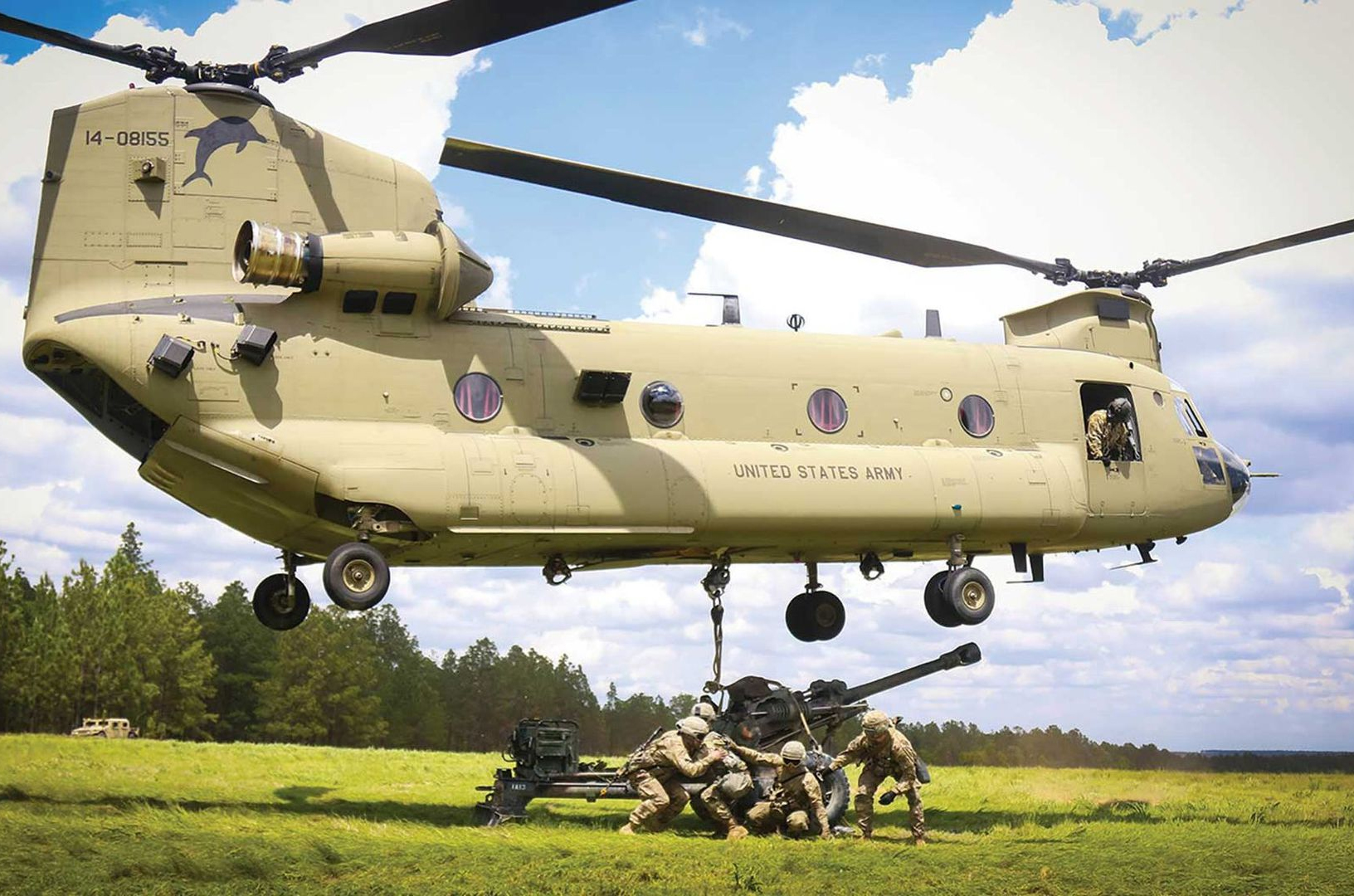
Operational and strategic implications
-
Operational mobility multiplier: The platform dramatically increases operational reach and tempo — moving heavy equipment and formations quickly changes campaign logistics and tempo.
-
Strategic flexibility: Enables quick crisis response, large scale humanitarian relief and direct strategic insertion of forces beyond contested frontlines.
-
Deterrent & force projection: Visible heavy-lift capability projects sustainment and reinforcement options that adversaries must account for, complicating their operational calculations.
-
Cost of attrition: Losses are mission-critical — each airframe and its crew represent significant capability and long replacement timelines; force managers must balance risk vs. operational necessity.
Recommendations & best practice (if employing in contested environments)
-
Precede insertions with layered ISR and SEAD. Use UAS and EW to locate and suppress threats prior to approach.
-
Employ multi-axis approaches and dispersed LZs to reduce concentration risks.
-
Integrate robust escort and decoying assets — attack helicopters, fixed-wing CAS, and loitering ISR drones.
-
Harden and disperse FARPs, and practice rapid turnarounds to minimize aircraft exposure.
-
Upgrade protection suites where possible (MAWS, DIRCM, advanced RWR) and maintain strict countermeasure discipline.
-
Sustain training intensity on NVG, sling load, mountain/hot-and-high operations and joint mêlée drills.
Conclusion
The tandem-rotor heavy-lift platform depicted is a theater-shaping asset: unmatched in its ability to move heavy payloads and large bodies of troops rapidly. Its strengths are strategic mobility, logistics surge capacity and special-operations reach. Those strengths, however, come with a clear vulnerability footprint in contested airspace that must be managed through combined-arms planning, robust ISR/SEAD, escort doctrine, and rigorous sustainment. When employed correctly and protected by joint assets, a Chinook-class helicopter is a decisive enabler of operational agility and sustained combat power.
